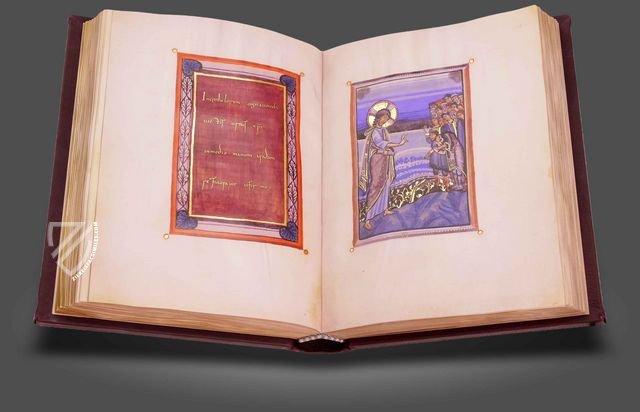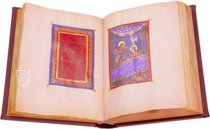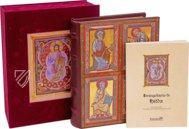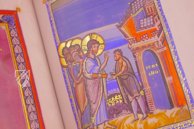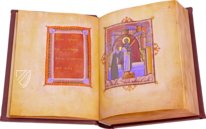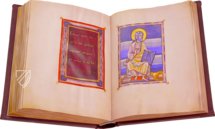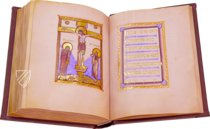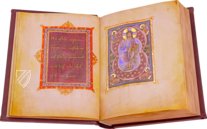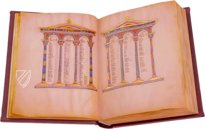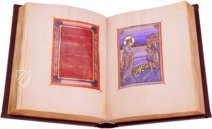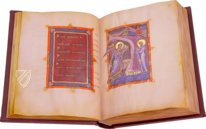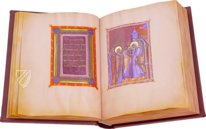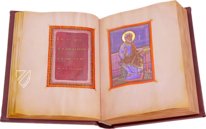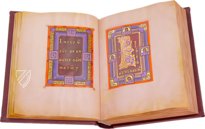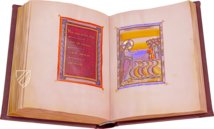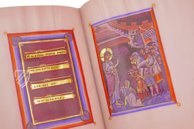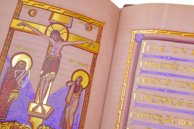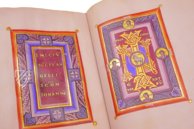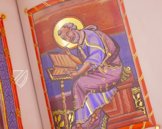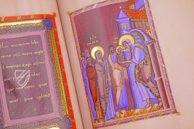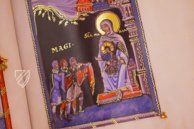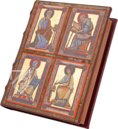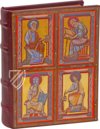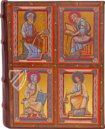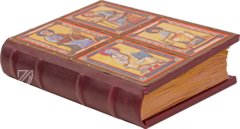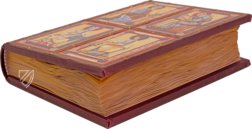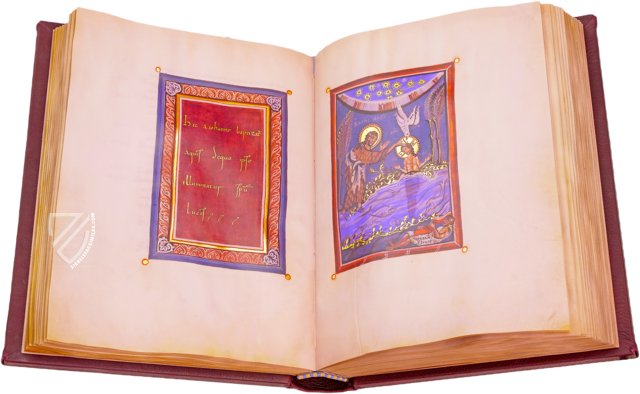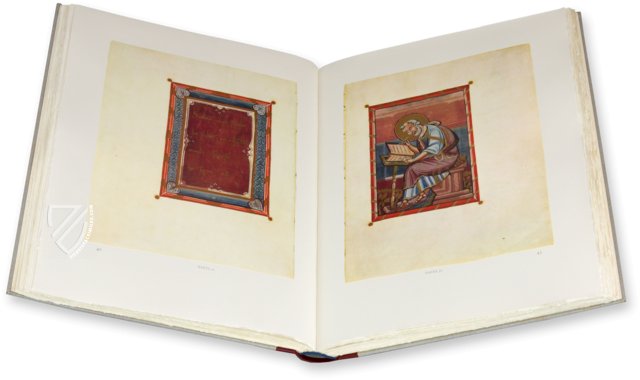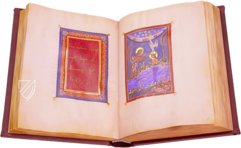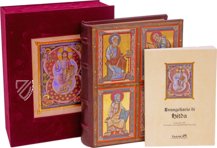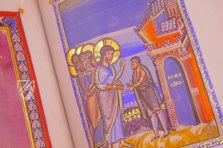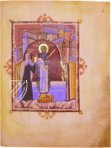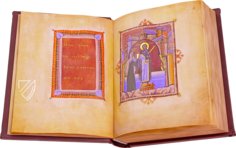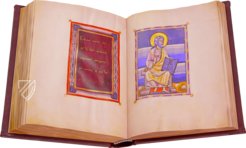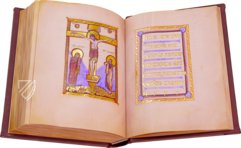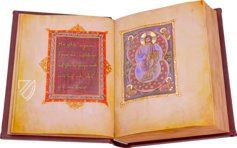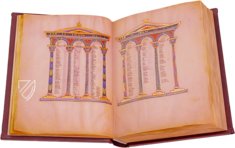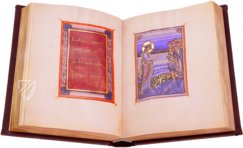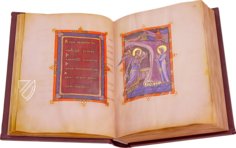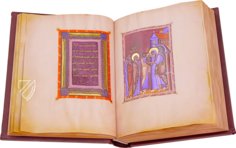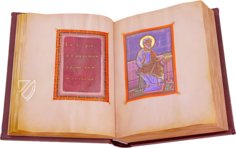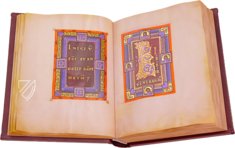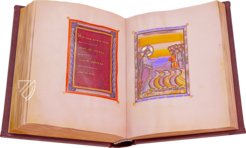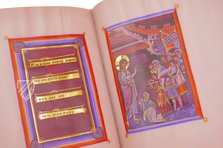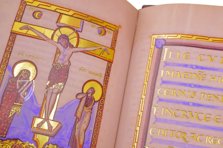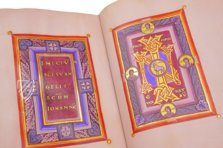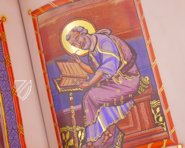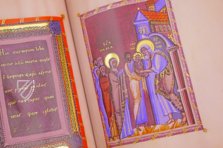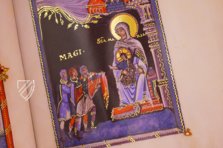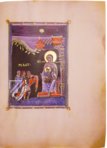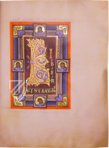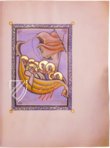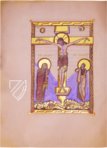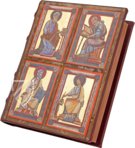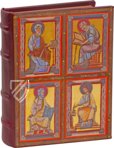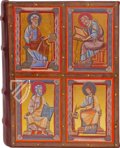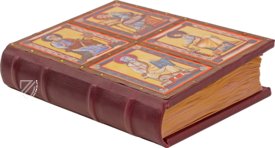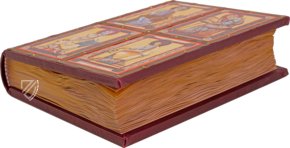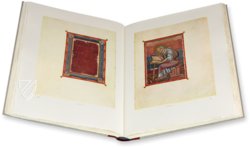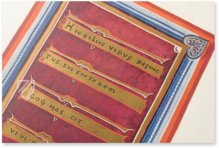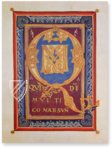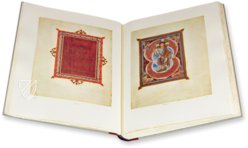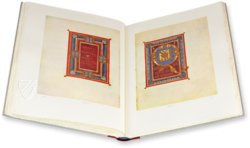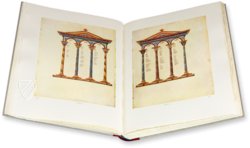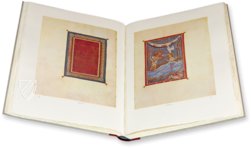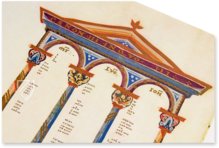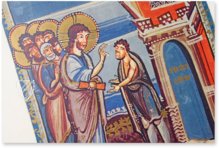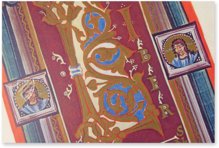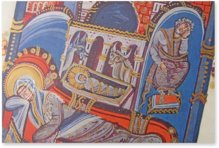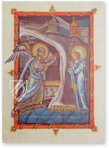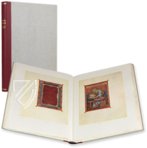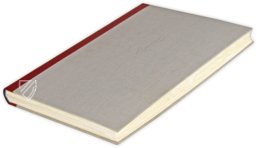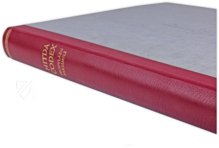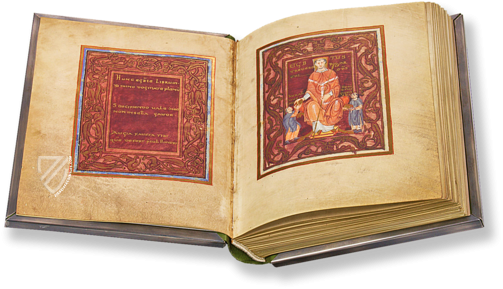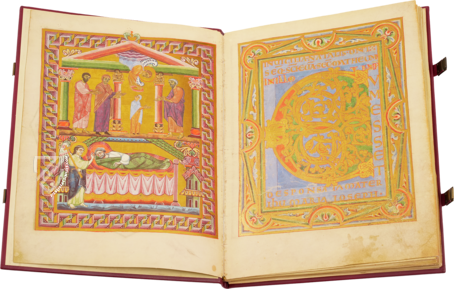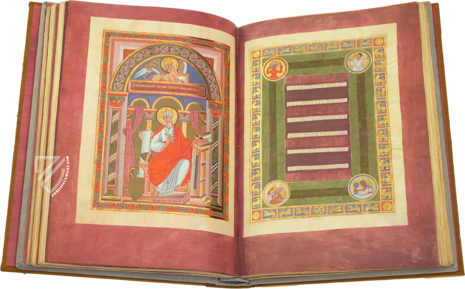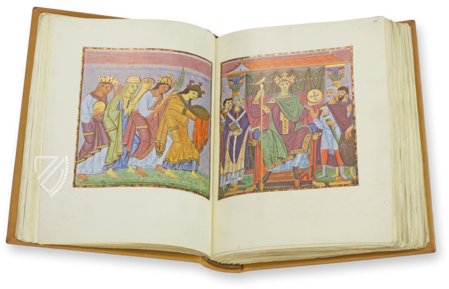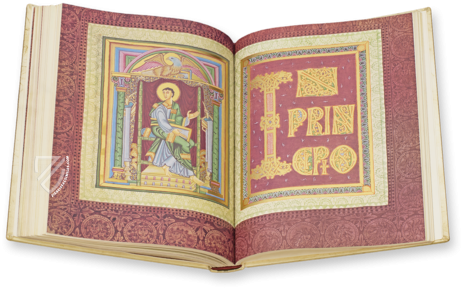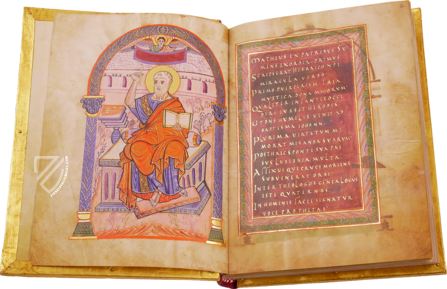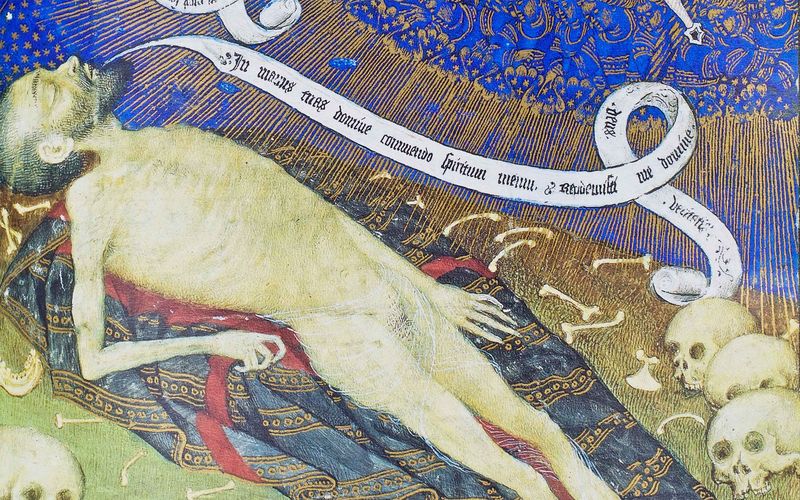Hitda Codex
(3,000€ - 7,000€)
The so-called Hitda Codex is considered to be one of the gems of medieval Ottonian illumination. Probably originating from Cologne ca. 1000, the manuscript is directly tied to the nunnery of St. Walburga in Meschede. The splendid codex was commissioned by Abbess Hitda, who was immortalized in the dedication picture. Additionally, the name of Archbishop Gero of Cologne has also been found in research as an additional possible patron of the manuscript. The manuscript’s 58 miniatures of biblical scenes with their exceptional style make the codex something special!
Hitda Codex
The so-called Hitda Codex is considered to be one of the gems of medieval Ottonian illumination. Probably originating from Cologne ca. 1000, the manuscript is directly tied to the nunnery of St. Walburga in Meschede. The splendid codex was commissioned by Abbess Hitda, who was immortalized in the dedication picture. Additionally, the name of Archbishop Gero of Cologne has also been found in research as an additional possible patron of the manuscript. The manuscript’s 58 miniatures of biblical scenes with their exceptional style make the codex something special!
The Noble Abbess or the Archbishop?
The Hitda Codex is an exciting work of illumination from Cologne ca. 1000. Today, the codex is named after one of its possible commissioners: the Abbess Hitda von Meschede. She was likely a person of high rank, possibly from the family of the counts of Werl. As abbess, she presided over the St. Walburga abbey in Meschede, a noble nunnery during the Carolingian period. The precious manuscript could have been a valuable present to the cloister, because a directory of their numerous donations was recorded in the handbook – albeit later. Among the items listed there are a splendid gold cross and a valuable statue of the Virgin Mary.
Hidda, the Mother of Gero
Another famous name, which can probably be brought into connection with the manuscript as a patron, is Gero. This Gero (ca. 900–976) was the Archbishop of Cologne and is famous as the donor of the famous Gero Codex. The Hitda Codex could have been one of this costly commissions, in order to fulfill the legacy of his mother Hidda who died in Jerusalem ca. 969/70.
Stylistically Excellent Painting
The evangeliary is illustrated with large-format biblical scenes. These scene are presented on 58 image pages with generous use of gold leaf. Broad, colorful frames surround the central depictions with large figures in the center. Nevertheless, it is the expressive design vocabulary and remarkable coloring that makes these miniatures special. A depiction showing the namesake Hitda can be seen in the dedication picture, as she dedicates the evangeliary to St. Walburga. Similarly, the famous miniature of Calming the Storm has developed into an icon due to its unbelievable expressiveness.
Codicology
- Alternative Titles
- Hitda-Evangeliar
Hitda Evangeliary
Hitda von Meschede Gospels
Meschede Gospels
Der Darmstadt Hitda-Codex
Hidda Codex
Darmstädter Hitda-Codex
Evangeliar der Hitda von Meschede
Evangeliario di Hitda - Size / Format
- 438 pages / 29.0 × 21.8 cm
- Origin
- Germany
- Date
- Around 1000
- Epochs
- Style
- Genre
- Language
- Script
- Carolingian minuscule
- Illustrations
- 58 decorated and miniature pages
- Content
- Contains an evangeliary, a selection of passages from the Gospels. The Hitda Codex is the only surviving series of illuminations of the Cologne school of this period exhibiting the Life of Christ.
- Patron
- Gero (c. 900 – June 29th 976), archbishop of Cologne, or Hitda, abbess of Meschede
- Artist / School
- Master of the Hitda Codex
Gregory Master
Cologne School
Hitda Codex
Incipit Page: Gospel of Luke
Here we find an initial within an initial, specifically a small “M” within a large “Q” to introduce the opening lines of the Gospel of Luke from the Vulgate Bible: Quoniam quidem. The tail of the “Q” artfully wraps itself around the frame. Large initials constructed of golden interlace were a popular feature of late-Ottonian and early-Romanesque manuscripts in Germany, the addition of a purple painted background speaks to the preciousness of this particular commission.
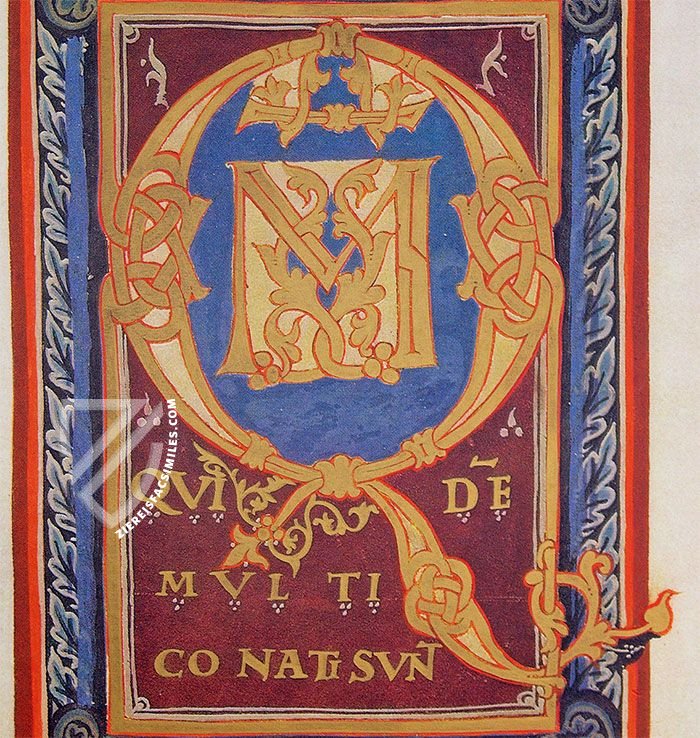
Hitda Codex
Annunciation
The finest materials were used for this masterful Ottonian miniature of the Annunciation: expensive pigments of blue and red, purple-dyed vellum, gold leaf, and silver ink was even used to label the Virgin Mary and the archangel Gabriel. Classically-styled churches are the only objects seen in the background of rich purple.
The soon-to-be Mother of God is depicted in profile with hands folded in prayer while the angel Gabriel is depicted in three-quarter view with a hand raised in a sign of benediction. The angel is depicted with a foot and wings hanging out of the frame as though it just flew down from Heaven. It appears as though a curtain has been pulled back, removing the barrier between the realms of the mortal and the eternal.
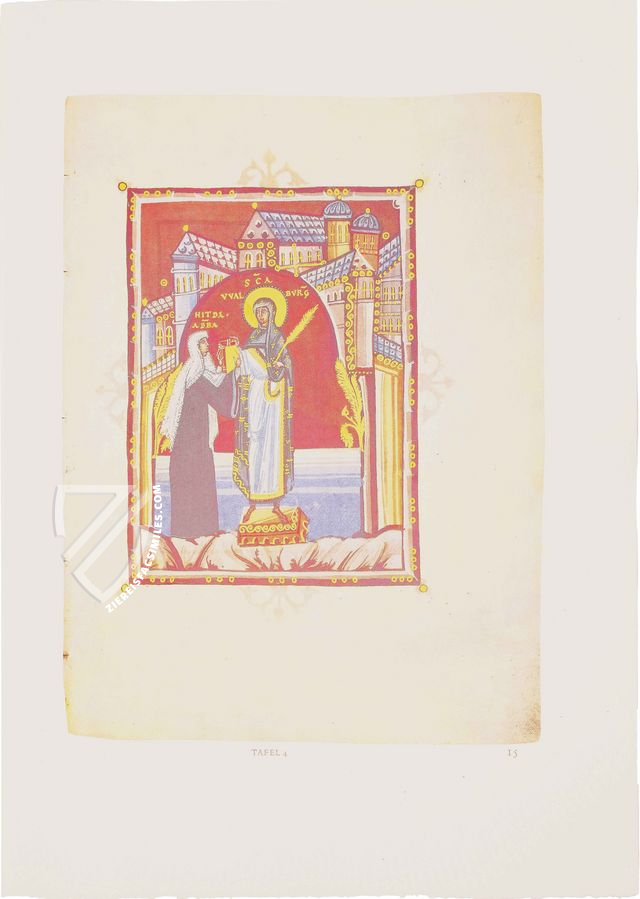
#1 Evangeliario di Hitda
Language: Italian
(3,000€ - 7,000€)
#2 Hidta-Codex
Language: German
(1,000€ - 3,000€)
- Treatises / Secular Books
- Apocalypses / Beatus
- Astronomy / Astrology
- Bestiaries
- Bibles / Gospels
- Chronicles / History / Law
- Geography / Maps
- Saints' Lives
- Islam / Oriental
- Judaism / Hebrew
- Single Leaf Collections
- Leonardo da Vinci
- Literature / Poetry
- Liturgical Manuscripts
- Medicine / Botany / Alchemy
- Music
- Mythology / Prophecies
- Psalters
- Other Religious Books
- Games / Hunting
- Private Devotion Books
- Other Genres
- Afghanistan
- Armenia
- Austria
- Belgium
- Belize
- Bosnia and Herzegovina
- China
- Colombia
- Costa Rica
- Croatia
- Cyprus
- Czech Republic
- Denmark
- Egypt
- El Salvador
- Ethiopia
- France
- Germany
- Greece
- Guatemala
- Honduras
- Hungary
- India
- Iran
- Iraq
- Israel
- Italy
- Japan
- Jordan
- Kazakhstan
- Kyrgyzstan
- Lebanon
- Liechtenstein
- Luxembourg
- Mexico
- Morocco
- Netherlands
- Palestine
- Panama
- Peru
- Poland
- Portugal
- Romania
- Russia
- Serbia
- Spain
- Sri Lanka
- Sweden
- Switzerland
- Syria
- Tajikistan
- Turkey
- Turkmenistan
- Ukraine
- United Kingdom
- United States
- Uzbekistan
- Vatican City
- A. Oosthoek, van Holkema & Warendorf
- Aboca Museum
- Ajuntament de Valencia
- Akademie Verlag
- Akademische Druck- u. Verlagsanstalt (ADEVA)
- Aldo Ausilio Editore - Bottega d’Erasmo
- Alecto Historical Editions
- Alkuin Verlag
- Almqvist & Wiksell
- Amilcare Pizzi
- Andreas & Andreas Verlagsbuchhandlung
- Archa 90
- Archiv Verlag
- Archivi Edizioni
- Arnold Verlag
- ARS
- Ars Magna
- ArtCodex
- AyN Ediciones
- Azimuth Editions
- Badenia Verlag
- Bärenreiter-Verlag
- Belser Verlag
- Belser Verlag / WK Wertkontor
- Benziger Verlag
- Bernardinum Wydawnictwo
- BiblioGemma
- Biblioteca Apostolica Vaticana (Vaticanstadt, Vaticanstadt)
- Bibliotheca Palatina Faksimile Verlag
- Bibliotheca Rara
- Boydell & Brewer
- Bramante Edizioni
- Bredius Genootschap
- Brepols Publishers
- British Library
- C. Weckesser
- Caixa Catalunya
- Canesi
- CAPSA, Ars Scriptoria
- Caratzas Brothers, Publishers
- Carus Verlag
- Casamassima Libri
- Centrum Cartographie Verlag GmbH
- Chavane Verlag
- Christian Brandstätter Verlag
- Circulo Cientifico
- Club Bibliófilo Versol
- Club du Livre
- CM Editores
- Collegium Graphicum
- Collezione Apocrifa Da Vinci
- Comissão Nacional para as Comemorações dos Descobrimentos Portugueses
- Coron Verlag
- Corvina
- CTHS
- D. S. Brewer
- Damon
- De Agostini/UTET
- De Nederlandsche Boekhandel
- De Schutter
- Deuschle & Stemmle
- Deutscher Verlag für Kunstwissenschaft
- DIAMM
- Droz
- E. Schreiber Graphische Kunstanstalten
- Ediciones Boreal
- Ediciones Grial
- Ediclube
- Edições Inapa
- Edilan
- Editalia
- Edition Deuschle
- Edition Georg Popp
- Edition Leipzig
- Edition Libri Illustri
- Editiones Reales Sitios S. L.
- Éditions de l'Oiseau Lyre
- Editions Medicina Rara
- Editorial Casariego
- Editorial Mintzoa
- Editrice Antenore
- Editrice Velar
- Edizioni Edison
- Egeria, S.L.
- Eikon Editores
- Electa
- Emery Walker Limited
- Enciclopèdia Catalana
- Eos-Verlag
- Ephesus Publishing
- Ernst Battenberg
- Eugrammia Press
- Extraordinary Editions
- Fackelverlag
- Facsimila Art & Edition
- Facsimile Editions Ltd.
- Facsimilia Art & Edition Ebert KG
- Faksimile Verlag
- Feuermann Verlag
- Folger Shakespeare Library
- Franco Cosimo Panini Editore
- Friedrich Wittig Verlag
- Fundación Hullera Vasco-Leonesa
- G. Braziller
- Gabriele Mazzotta Editore
- Gebr. Mann Verlag
- Gesellschaft für graphische Industrie
- Getty Research Institute
- Giovanni Domenico de Rossi
- Giunti Editore
- Graffiti
- Grafica European Center of Fine Arts
- Guido Pressler
- Guillermo Blazquez
- Gustav Kiepenheuer
- H. N. Abrams
- Harrassowitz
- Harvard University Press
- Helikon
- Hendrickson Publishers
- Henning Oppermann
- Herder Verlag
- Hes & De Graaf Publishers
- Hoepli
- Holbein-Verlag
- Houghton Library
- Hugo Schmidt Verlag
- Idion Verlag
- Il Bulino, edizioni d'arte
- ILte
- Imago
- Insel Verlag
- Insel-Verlag Anton Kippenberger
- Instituto de Estudios Altoaragoneses
- Instituto Nacional de Antropología e Historia
- Introligatornia Budnik Jerzy
- Istituto dell'Enciclopedia Italiana - Treccani
- Istituto Ellenico di Studi Bizantini e Postbizantini
- Istituto Geografico De Agostini
- Istituto Poligrafico e Zecca dello Stato
- Italarte Art Establishments
- Jan Thorbecke Verlag
- Johnson Reprint Corporation
- Josef Stocker
- Josef Stocker-Schmid
- Jugoslavija
- Karl W. Hiersemann
- Kasper Straube
- Kaydeda Ediciones
- Kindler Verlag / Coron Verlag
- Kodansha International Ltd.
- Konrad Kölbl Verlag
- Kurt Wolff Verlag
- La Liberia dello Stato
- La Linea Editrice
- La Meta Editore
- Lambert Schneider
- Landeskreditbank Baden-Württemberg
- Leo S. Olschki
- Les Incunables
- Liber Artis
- Library of Congress
- Libreria Musicale Italiana
- Lichtdruck
- Lito Immagine Editore
- Lumen Artis
- Lund Humphries
- M. Moleiro Editor
- Maison des Sciences de l'homme et de la société de Poitiers
- Manuscriptum
- Martinus Nijhoff
- Maruzen-Yushodo Co. Ltd.
- MASA
- Massada Publishers
- McGraw-Hill
- Metropolitan Museum of Art
- Militos
- Millennium Liber
- Müller & Schindler
- Nahar - Stavit
- Nahar and Steimatzky
- National Library of Wales
- Neri Pozza
- Nova Charta
- Oceanum Verlag
- Odeon
- Orbis Mediaevalis
- Orbis Pictus
- Österreichische Staatsdruckerei
- Oxford University Press
- Pageant Books
- Parzellers Buchverlag
- Patrimonio Ediciones
- Pattloch Verlag
- PIAF
- Pieper Verlag
- Plon-Nourrit et cie
- Poligrafiche Bolis
- Presses Universitaires de Strasbourg
- Prestel Verlag
- Princeton University Press
- Prisma Verlag
- Priuli & Verlucca, editori
- Pro Sport Verlag
- Propyläen Verlag
- Pytheas Books
- Quaternio Verlag Luzern
- Reales Sitios
- Recht-Verlag
- Reichert Verlag
- Reichsdruckerei
- Reprint Verlag
- Riehn & Reusch
- Roberto Vattori Editore
- Rosenkilde and Bagger
- Roxburghe Club
- Salerno Editrice
- Saltellus Press
- Sandoz
- Sarajevo Svjetlost
- Schöck ArtPrint Kft.
- Schulsinger Brothers
- Scolar Press
- Scrinium
- Scripta Maneant
- Scriptorium
- Shazar
- Siloé, arte y bibliofilia
- SISMEL - Edizioni del Galluzzo
- Sociedad Mexicana de Antropología
- Société des Bibliophiles & Iconophiles de Belgique
- Soncin Publishing
- Sorli Ediciones
- Stainer and Bell
- Studer
- Styria Verlag
- Sumptibus Pragopress
- Szegedi Tudomànyegyetem
- Taberna Libraria
- Tarshish Books
- Taschen
- Tempus Libri
- Testimonio Compañía Editorial
- Thames and Hudson
- The Clear Vue Publishing Partnership Limited
- The Facsimile Codex
- The Folio Society
- The Marquess of Normanby
- The Richard III and Yorkist History Trust
- Tip.Le.Co
- TouchArt
- TREC Publishing House
- TRI Publishing Co.
- Trident Editore
- Tuliba Collection
- Typis Regiae Officinae Polygraphicae
- Union Verlag Berlin
- Universidad de Granada
- University of California Press
- University of Chicago Press
- Urs Graf
- Vallecchi
- Van Wijnen
- VCH, Acta Humaniora
- VDI Verlag
- VEB Deutscher Verlag für Musik
- Verlag Anton Pustet / Andreas Verlag
- Verlag Bibliophile Drucke Josef Stocker
- Verlag der Münchner Drucke
- Verlag für Regionalgeschichte
- Verlag Styria
- Vicent Garcia Editores
- W. Turnowski Ltd.
- W. Turnowsky
- Waanders Printers
- Wiener Mechitharisten-Congregation (Wien, Österreich)
- Wissenschaftliche Buchgesellschaft
- Wissenschaftliche Verlagsgesellschaft
- Wydawnictwo Dolnoslaskie
- Xuntanza Editorial
- Zakład Narodowy
- Zollikofer AG

